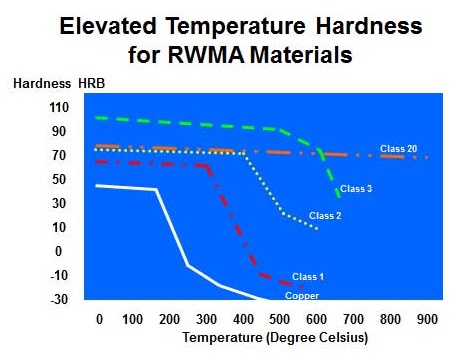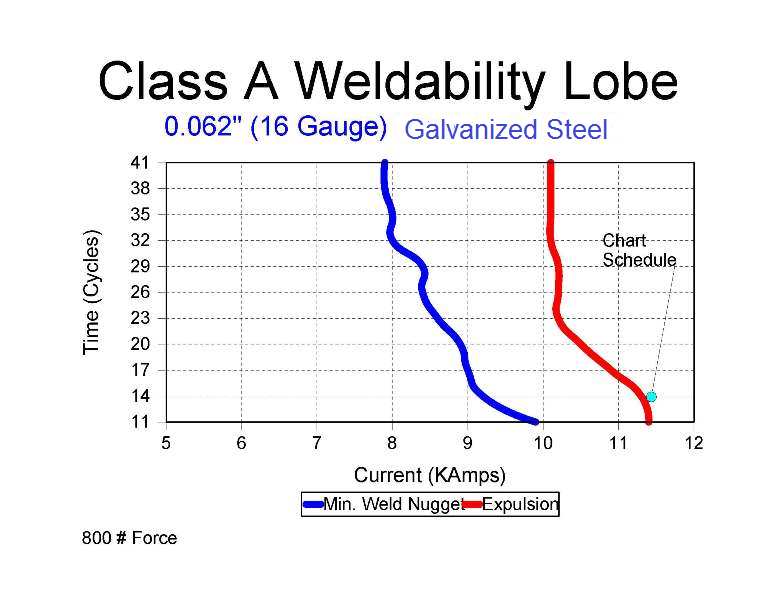A common use for RWMA Class 20 material is spot welding of galvanized steel. Its properties of anti-sticking and heat resistance have made it one of the choices for this sometimes difficult welding operation. Other materials Class 2 and Class 1 can and are used for galvanized also. What makes this premium material a choice to consider for galvanized steel welding?
It is well known that the zinc/galvanized coating readily alloys with the copper of the electrode and weakens its surface structure and forms a layer of brass on the welding surface. Any electrode alloy which maintains its strength and retards this surface condition is a candidate for galvanized welding.

In this chart Class 20 is shown to resist heat and maintain it strength at elevated temperatures. In resistance welding to take advantage of these properties Class 20 should be used in higher heat applications. In many cases it is used exactly this way. The weld schedules are being run hot. The electrodes are subjected to a lot of heat, potential annealing, mushrooming, brassing and sticking. The weld schedule by choice is being run at the high end of the weld lobe.

In the weld lobe shown a good weld can be made at 14 cycles with 9.5-11.5 amperes. Class 20 applications are used when the schedule is set to run at 11.5 as marked. This means the electrode will see expulsion frequently if not all of the time. These companies want to insure they are hot enough to never be cold and fall to the left of the blue line. They choose to use a premium electrode material and run hot to insure nugget integrity. With wear the nugget will still fail but with history they know when and change electrodes or redress before this happens.
The other choice of course is to turn the current down below the expulsion level and operate between the blue and red line with a safety factor.
Other materials with similar properties are:

The other choices are either RWMA Class 2 or Class 1 alloy electrode material depending upon how hot you are running. At the reduced heat operating levels between the red and blue lines these alloys will perform well. Most of industry is welding galvanized and coated materials with RWMA Class 1 and 2.
If you are considering changing electrode material and potentially altering the weld schedule, keep in mind the following:
Pressure, current and time (PCT) are the variables that could be adjusted. This may lead to requalification of the weld set-up depending upon your in house procedures and the amount of the schedule change.
Reference: RWMA Resistance Welding Manual 4th Edition
AWS J1.3 Specifications for Materials Used in Resistance Welding electrodes and Tooling

